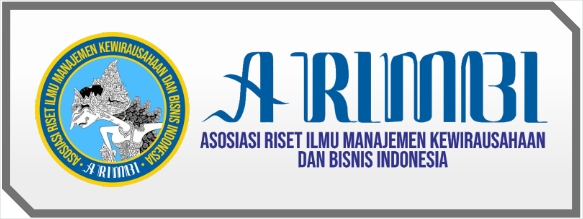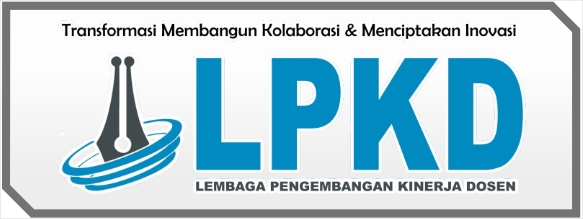ARDL PANEL MODEL OF INTERNATIONAL FINANCIAL SYSTEM AND MONETARY POLICY OF ASIA PASIIFIC ECONOMIC COOPERATION
DOI:
https://doi.org/10.55606/iceb.v1i2.185Keywords:
International Finance, ARDL Panel, Economic FundamentalsAbstract
The financial system plays an important role in the economy. An unstable financial system will be vulnerable to various problems that disrupt the rotation of a country's economy and be vulnerable to economic problems such as the global crisis in various countries. The problem that occurs is the occurrence of Covid-19 causing various fluctuations in the level of inflation, money supply, imports, the occurrence of unstable inflation from January 2019 to August 2021, low inflation resulting in a decrease in imports and an increase in the money supply in Mexico. , Vietnam, Philippines, Hongkong, Indonesia, Canada, Malaysia, Singapore, Peru, and China. The analytical method in this study uses the ARDL Panel (Autoregression Distributed Lag) approach. The ARDL Panel Model determines which country models from APEC countries are able to control long-term financial system-based economic fundamentals in Mexico, Vietnam, the Philippines, Hong Kong, Indonesia, Canada, Malaysia, Singapore, Peru, and China and the Different Test for modeling the impact of covid-19 19 on the economic fundamentals of the financial system. The results of the research found the ARDL Panel prediction model in modeling the impact of Covid-19 on economic fundamentals in the financial system. The main Leading Indicator of variable effectiveness in controlling Inflation In TAPEC is JUB where Vietnam, the Philippines, Hong Kong, Japan, Malaysia, Singapore, Peru and China have a significant influence in controlling Inflation. Then overall in the long term (Long Run) it turns out that only the JUB and CDV variables have an effect on INF In TAPEC, while in the short term (Short Run) it is JUB that influences Inflation In TAPEC.
References
Warjiyo, P. (2017). mekanisme transmisi kebijakan moneter di indonesia. indonesia, dki jakarta, indonesia: Pusat Pendidikan Dan Studi Kebanksentralan (PPSK) Bank Indonesia.
Bernardin, D. E. Y., & Sugandi, I. R. (2021). Efek Kebijakan MOneter Bank Indonesia: Stabilitas Kinerja Ekspor Crude Palm Oil (CPO) dan Tingkat Inflasi. Jurnal Financia: Akuntansi Dan Keuangan, 2(2), 52-61.
Fikri, A. A. H. S. (2021). ANALISIS SIMULTAN SEKTOR MONETER DI INDONESIA (PENDEKATAN PARSIAL MUNDELL-FLEMING). Jurnal Ekonomi dan Pendidikan, 18(1).
Sitorus, R. R. I. (2021). Efektivitas Transmisi Kebijakan Moneter Jalur Suku Bunga Dan Jalur Nilai Tukar Terhadap Stabilitas Harga Di Five Emerging Market Asia Pasific (FEMAP). Kumpulan Karya Ilmiah Mahasiswa Fakultas Sosial Sains, 1(01).
Siswanto, A. A. (2021). Analisis Pengendalian Stabilitas Ekonomi Makro Negara Indonesia, China, India (ICI) Berbasis Transmisi Kebijakan Moneter Melalui Jalur Suku Bunga dan Ekspektasi Inflasi.
Kartika, D. (2021). Analisis Mekanisme Transmisi Kebijakan Moneter Jalur Suku Bunga (Doctoral dissertation, UNIMED).
Hasibuan, S., & Pratomo, W. A. (2013). Mekanisme Transmisi Kebijakan Moneter Melalui Suku Bunga SBI Sebagai Sasaran Operasional Kebijakan Moneter dan Variabel Makroekonomi Indonesia. Jurnal Ekonomi dan Keuangan, 1(12), 14771.
Taylor, J. B. (1995) ‘The Monetary Transmission Mechanism: An Empirical Framework’, 9(4), pp. 11–26.
Herlina, D. (2014). Identifikasi Mekanisme Transmisi Kebijakan Moneter di Indonesia Tahun 2000-2011.
Astuti, R. D., & Hastuti, S. R. B. (2020). Transmisi Kebijakan Moneter Di Indonesia. Jurnal Ekonomi-Qu, 10(1), 1-22.
Natsir, M. (2011). Analisis Empiris Efektivitas Mekanisme Transmisi Kebijakan Moneter Di Indonesia Melalui Jalur Suku Bunga (Interest Rate Channel) Periode 1990: 2-2007: 1. Jurnal Ekonomi dan Bisnis Airlangga, 21(2).
Susilowati, M. W. K., & Wahyuningdyah, R. Y. (2018). Efektivitas BI7DRR dalam Kerangka Mekanisme Transmisi Kebijakan Moneter untuk Pengendalian Inflasi. Praxis: Jurnal Sains, Teknologi, Masyarakat dan Jejaring, 1(1), 78-92.
Berg, A., Karam, P. D., & Laxton, D. (2006). A practical model-based approach to monetary policy analysis-overview.
Anzuini, A., Lombardi, M. J., & Pagano, P. (2012). The impact of monetary policy shocks on commodity prices. Bank of Italy Temi di Discussione Working Paper, (851).
Clark, T. E. (1999). The responses of prices at different stages of production to monetary policy shocks. Review of Economics and Statistics, 81(3), 420-433.
Jang, K., & Ogaki, M. (2004). The effects of monetary policy shocks on exchange rates: a structural vector error correction model approach. Journal of the Japanese and International Economies, 18(1), 99-114.
Inui, M., Sudou, N., & Yamada, T. (2017). The effects of monetary policy shocks on inequality in Japan.
Novalina, A., Rusiadi, R., & Rangkuty, D. M. (2021). ANALISIS STABILITAS SISTEM KEUANGAN DI MASA PANDEMI COVID-19 DI INDONESIA. JEpa, 6(2), 619-630.
Wulandari, N. T. (2021). ANALISIS RESPON TRANSMISI MONETER TERHADAP STABILITAS EKONOMI DAN VOLATILITAS FOREIGN EXCHANGE RESERVES DI INDONESIA DAN AUSTRALIA (PENDEKATAN MODEL GARCH, VAR DAN PANEL ARDL). Kumpulan Karya Ilmiah Mahasiswa Fakultas Sosial Sains, 2(02).
Syaputra, R., & Adry, M. R. (2019). Pengaruh Variabel Makroekonomi terhadap Stabilitas Sistem Keuangan di Indonesia (Melalui Pendekatan Moneter). Jurnal Kajian Ekonomi dan Pembangunan, 1(2), 473-486.
Setiawan, R. Y., & Karsinah, K. (2016). Mekanisme Transmisi Kebijakan Moneter dalam Mempengaruhi Inflasi dan Pertumbuhan Ekonomi di Indonesia. Economics Development Analysis Journal, 5(4), 460-473.
Saputro, B., & Sukmana, R. (2018). Analisis Transmisi Kebijakan Moneter Ganda Terhadap Inflasi di Indonesia. Jurnal Ekonomi Syariah Teori dan Terapan, 5(4), 322-335.
Kemu, S. Z., & Ika, S. (2016). Transmisi BI Rate sebagai Instrumen untuk Mencapai Sasaran Kebijakan Moneter. Kajian Ekonomi dan Keuangan, 20(3), 261-284.
PANJAITAN, M. (2017). Studi Efektivitas Mekanisme Transmisi Kebijakan Moneter di Indonesia. Jurnal Ilmiah Maksitek, 2(2).
Rohim, F. (2011). Mekanisme Transmisi Kebijakan Moneter Melalui Suku Bunga Sbi Sebagai Sasaran Operasional Kebijakan Moneter Dan Variabel Makroekonomi Indonesia.
Herlina, D. (2018). Identifikasi Mekanisme Transmisi Kebijakan Moneter Saluran Uang dan Saluran Suku Bunga di Indonesia. Jurnal Ekonomi-Qu, 8(2).
Sudarsono, H. (2018). Analisis efektifitas transmisi kebijakan moneter konvensional dan syariah dalam mempengaruhi tingkat inflasi. Jurnal Ekonomi dan Keuangan Islam, 3(2), 53-64.
Mayo, R., Maskie, G., & Pratomo, D. S. (2014). Efektivitas Jalur Kredit dalam Mekanisme Transmisi Kebijakan Moneter di Indonesia. Jurnal Keuangan dan Perbankan, 18(1).
Kumala, N. I., & Rosyidi, S. (2017). Komparasi Mekanisme Transmisi Kebijakan Moneter Syariah dan Konvensional Melalui Jalur Harga Aset Terhadap Inflasi di Indonesia. Jurnal Ekonomi Syariah Teori dan Terapan, 4(10), 817-832.
Hartomo, H. A. (2017). Pengaruh Jumlah Uang Beredar dan Kurs terhadap Tingkat Inflasi di Indonesia Sebelum dan Setelah Krisis Global 2009. Media Ekonomi, 18(3), 1-22.
Ronit, M., & Divya, P. (2014). The relationship between the growth of exports and growth of gross domestic product of India. International Journal of Business and Economics Research, 3(3), 135-139.
Salmanov, O. (2016). Investigating the Impact of Monetary Policy using the Vector Auto-regression Method. International Journal of Economics and Financial Issues, 6, S2.
Kishor, N. K., & Marfatia, H. A. (2013). The time-varying response of foreign stock markets to US monetary policy surprises: Evidence from the Federal funds futures market. Journal of International Financial Markets, Institutions and Money, 24, 1-24.
Karim, Z. A., & Azman-Saini, W. N. W. (2013). Firm-level investment and monetary policy in Malaysia: do the interest rate and broad credit channels matter?. Journal of the Asia Pacific Economy, 18(3), 396-412.
Hameed, D. (2010). Impact of monetary policy on gross domestic product (GDP). Interdisciplinary journal of contemporary research in business, 3(1), 1348-1361.
Betts, C., & Devereux, M. (2001). The international effects of monetary and fiscal policy in a two-country model. Money, capital mobility, and trade: essays in honor of Robert A. Mundell, 9-52.
Tillmann, P. (2016). Unconventional monetary policy and the spillovers to emerging markets. Journal of International Money and Finance, 66, 136-156.
Singh, K., & Kalirajan, K. (2007). Monetary transmission in post-reform India: an evaluation. Journal of the Asia Pacific Economy, 12(2), 158-187.
Precious, C., & Makhetha-Kosi, P. (2014). Impact of monetary policy on economic growth: A case study of South Africa. Mediterranean journal of social sciences, 5(15), 76-76.
Canuto, O., & Cavallari, M. (2013). Asset prices, macro prudential regulation, and monetary policy.
Bernanke, B. S., & Gertler, M. (1995). Inside the black box: the credit channel of monetary policy transmission. Journal of Economic perspectives, 9(4), 27-48.
Silaban, P. S. M., Putra, P. D., Dilani, E., & Simbolon, K. P. (2020). ANALISIS DAN STRATEGI UANG BEREDAR, TINGKAT SUKU BUNGA DAN NILAI TUKAR TERHADAP INFLASI AKIBAT COVID19 DI INDONESIA. Prosiding WEBINAR Fakultas Ekonomi Unimed “Strategi Dunia Usaha Menyikapi Status Indonesia Sebagai Negara Maju: Pra dan Pasca Covid-19”, 74-85.
Junaedi, D., Arsyad, M. R., Norman, E., Romli, M., & Salistia, F. (2021). Dampak Pandemi Covid-19 terhadap Stabilitas Moneter Indonesia. Al-Kharaj: Jurnal Ekonomi, Keuangan & Bisnis Syariah, 3(1), 17-36.
Assa, R. H., Rotinsulu, T. O., & Mandeij, D. (2020). ANALISIS KEBIJAKAN MONETER TERHADAP INFLASI DI INDONESIA PERIODE: 2006.1–2019-2. Jurnal Berkala Ilmiah Efisiensi, 20(01).
Setyawan, A. R. (2010). Efektifitas Kebijakan Moneter Terhadap Inflasi Di Indonesia. Jurnal Ekonomi Pembangunan, 8(1), 281-292.
SE, D. N. (2020). ANALISIS KOMPARASI MEKANISME TRANSMISI KEBIJAKAN MONETER KONVENSIONAL DAN SYARIAH SALURAN HARGA ASET TERHADAP INFLASI DI INDONESIA. Jurnal Ilmiah Mahasiswa FEB, 8(2).
Al Rasyid, M. (2019). ANALISIS BANK LENDING CHANNEL DALAM TRANSMISI KEBIJAKAN MONETER DAN STABILITAS EKONOMI DI INDONESIA DAN SINGAPURA. Kumpulan Karya Ilmiah Mahasiswa Fakultas Sosial Sains, 1(01).
Santosa, A. B. (2017, August). Analisis Inflasi di Indonesia. In Seminar Nasional Multi Disiplin Ilmu Unisbank 2017. Stikubank University.
Magdalena, I., & Pratomo, W. A. (2014). Analisis Efektivitas Transmisi Kebijakan Moneter Ganda di Indonesia. Jurnal Ekonomi dan Keuangan, 2(11), 14824.
Erawati, N., & Llewelyn, R. (2002). Analisa pergerakan suku bunga dan laju ekspektasi inflasi untuk menentukan kebijakan moneter di Indonesia. Jurnal Manajemen dan Kewirausahaan, 4(2), 98-107.
















